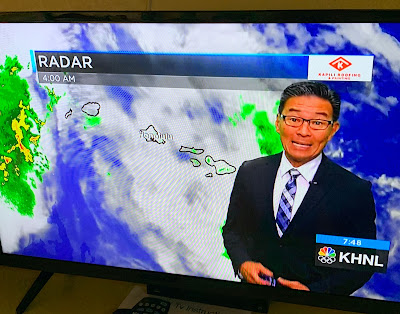 |
| Guy Hagi |
"I grew up on Oahu where I learned proper Pidgin."
These words, seen recently on social media, tickled me.
Some may consider "proper Pidgin" an oxymoron. Like saying, proper slang.
But guess what, the 2015 U.S. Census recognized Hawaii Creole English (Hawaiian Pidgin) as a language.
If you've spent any time around the Hawaiian islands you've heard locals speaking Pidgin. Its roots come from the plantation days of the 1830s. Its utility is undisputed. It enabled people from as far away as Japan, Korea, Portugal, England and Spain, among others, to communicate.
Children of the immigrants were particularly quick to learn and spread Pidgin throughout working class communities. Hawaiian Pidgin is referenced as English-based Creole.
Dat da case.
Pidgin rings with an economy of words and a nice flow that matches the mood of island life. When you hear it, you want to repeat it, use it. Some Pidgin, however, is too heavy to comprehend.
I studied Hawaiian music taught by Kalae "Bobo" Miles, a well-educated Hawaiian man who attended private Kamehameha boarding schools on Maui. You must claim Hawaiian ancestry to attend these schools. They take the Pidgin out of students.
When he introduced me to his father, Kalae told me that I would not understand a word of what he's saying. He was correct. His father's Pidgin was unlike anything I'd ever heard. It made no sense to me. There are different grades of Pidgin: heavy and light.
Kalae taught traditional Hawaiian music, mele (songs) in traditional Hawaiian language, sung in verse, a form of song taught to the Hawaiians by the missionaries, one worthy contribution to Hawaiian culture. Although he did say that these traditional Hawaiian songs contain secret meanings.
It doesn't take long to understand that the secret is obvious sexual content that the padres would have found unacceptable (hee hee). Or is it? Who's fooling who?
The Hawaiian music that became popular in the U.S. in the early 20th Century was hapa haole, meaning half English and half Hawaiian. Songs like Little Grass Shack and Lovely Hula Hands are hapa haole, not traditional Hawaiian. They mix English lyrics with Hawaiian words, many of which are multi-syllabic and fun to sing. Like, humuhumunukunukuapua'a, which describes a fish.
When Mele Kalikimaka (Merry Christmas) tumbled out of Bing Crosby's throat in mellifluous baritone, he was singing hapa haole.
Hapa haole songs are not Pidgin. Yet, the term itself has been called Pidgin. Hawaii Creole English has remained the language of the people, including elders like Kalae's father. An estimated 600,000 residents speak Pidgin natively, 400,000 as a second language, according to Wikipedia.
Foh evah, brah.
Advertisers on local TV dip into Pidgin to add color and humor to reach their intended audience. TV news broadcasters have fun with it. Popular NBC surfer-anchor-meteorologist Guy Hagi speaks quickly and authoritatively, throwing out phrases like "bad-hair advisory” for windy and "sticky" for humid. He can speak even more precisely by using his Pidgin:
“Small kine sticky.”
The photo of The Brothers Herron is classic.
ReplyDelete